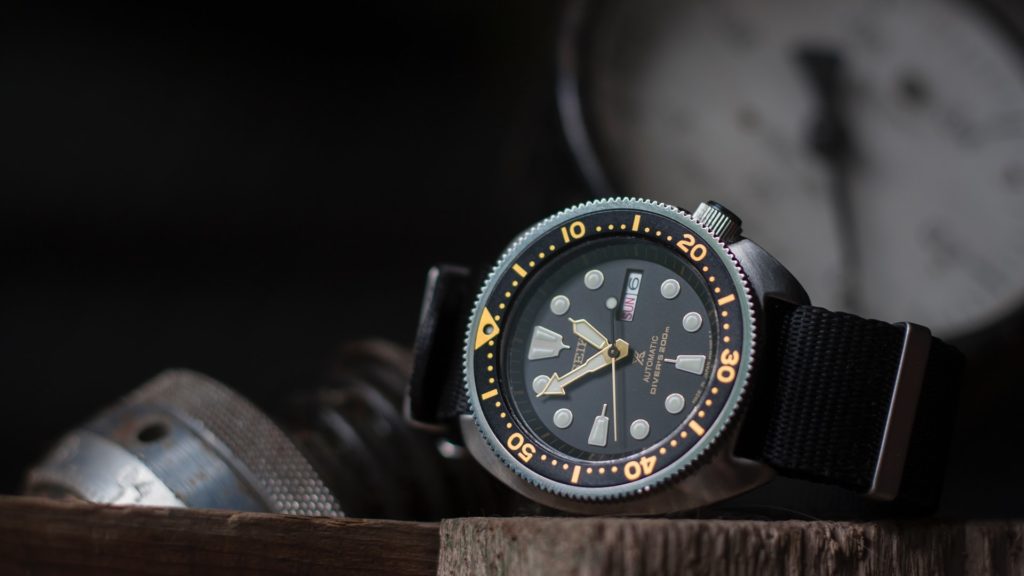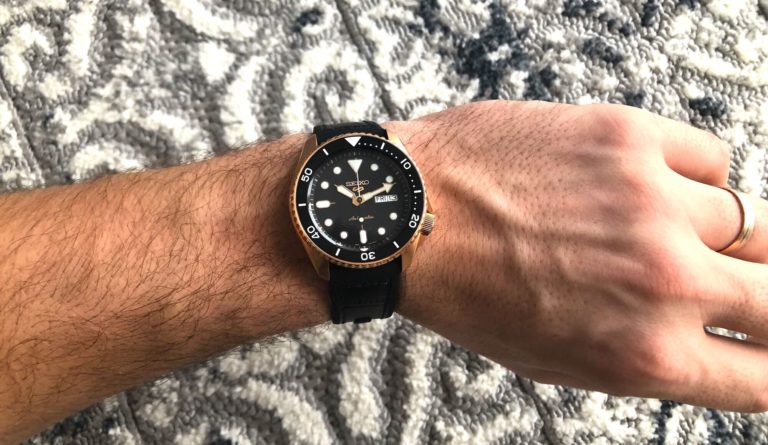Affiliate Disclosure: As an Amazon Associate I earn from qualifying purchases. Details
When it comes to the watch crystals, there are a few main types that you will hear referenced, mainly mineral crystal and sapphire crystal. Each type has its own unique benefits and drawbacks. However, there’s also Hardlex crystal, which can mainly be found in Seiko watches.
So, what is it exactly? And is it a decent crystal to have in a watch?
In this blog post, we’ll take a closer look at Hardlex crystal and how it compares to other types of crystals.

What is Hardlex Crystal?
Hardlex crystal is a type of watch crystal that Seiko has utilized for over 40 years. It was originally developed in 1970 as an alternative to acrylic crystals, which are more prone to scratching and clouding than other types of crystals.
But where does Hardlex place among the usual types of crystals?
In essence, a Hardlex crystal is basically a mineral glass for being made of silica and receiving heat and chemical treatment for improving scratch and pressure resistance.
However, compared to the typical mineral glass, Hardlex has received a somewhat different heat treatment and has been added with boron.
What boron does is that it adds more scratch resistance due to the fact of possessing superb hardness. On the Mohs scale, which measures the hardness of various gemstones, boron is rated between 9 and 10 (out of 10). It means it’s even harder than sapphire (9 out of 10).
Hardlex vs Sapphire Crystal
However, when compared to sapphire crystal, Hardlex is still not as scratch-resistant.
Sapphire crystal is made from synthetic sapphire, a mineral that is second only to diamond in terms of hardness. In simple terms, only the diamond can scratch the surface of a sapphire crystal.
In terms of impacts, however, Hardlex performs better because it is more flexible than sapphire. It means it won’t give in as easily after enduring a hard impact due to its flexibility.
This particular advantage is one of the reasons why Seiko employs Hardlex in its sports watches, especially dive watches.

When it comes to clarity, both perform well, and one can’t visually tell apart sapphire crystal from Hardlex, despite the fact that Hardlex is naturally more clear.
Hardlex vs Mineral Glass
Mineral glass is a simple glass that has received heat and chemical treatment, making it a classical tempered glass. However, as mentioned above, Seiko adds boron and its proprietary heat treatment to the process, eventually making Hardlex more resistant to scratches and shattering than mineral.
On Mohs hardness scale, mineral rates at 5-6 out of 10, while Hardlex has an unofficial hardness level of 7 out of 10. Therefore, Hardlex places between mineral and sapphire when it comes to the hardness of the crystal.
Hardlex vs Acrylic Glass
When compared to another discussed crystal, acrylic, Hardlex outperforms it in almost every field – it is more resistant to scratches, more durable, and has a higher degree of clarity than acrylic crystal.
Overall, acrylic is the least appreciated watch glass in the industry. Although there were times when acrylic was the only material used for dial coverings (even the luxury brands employed it), the arrival of new substances diminished its use to lower-priced watches with no real value.
Therefore, there’s not much point to collate Hardlex and acrylic since they’re pretty much like a Mercedes and a Nissan, i.e., incomparable.
Why Does Seiko Use Hardlex?
Now, you might be asking why Seiko uses Hardlex so extensively, even in timepieces that cost more than $500, where many expect to have sapphire instead?
There are several reasons why Seiko does that.
First and foremost, since Hardlex is Seiko’s proprietary material, it is a lot more cost-effective for them to stick with it than to go for other types of watch crystals.
However, it doesn’t mean Seiko offers lower quality watches primarily because of cutting costs. No.
The majority of watches with Hardlex crystal are either affordable watches or heavy-duty professional divers. The affordable ones would either way feature mineral, not sapphire if there wasn’t Seiko’s Hardlex around.

But when it comes to professional dive watches, there’s a certain reason why Hardlex is a better choice than sapphire. Due to the fact that Hardlex is less prone to damages caused by heavy impacts, it makes sense to use it in watches that are exposed to a lot of wear and tear. And dive watches receive it a lot, especially underwater where the pressure is huge.
Although the number of watches with Hardlex crystal is huge, there are still Seiko timepieces with sapphire crystals. They are mostly elegant dress watches and premium-class watches from the Presage and Premier collections.
Which Watches Use Hardlex Crystal?
Hardlex crystal can be found almost entirely from the Seiko 5 collection, all the way from the sub-$100 SNK line to the new SRPD series.
Also, Hardlex is widely employed in the professional-grade divers from the Prospex collection. Even the most famous modern history Seiko divers, the discontinued SKX007 and SKX009, feature it.
Feel free to check our list of the top Seiko watches where both Seiko 5 and SKX watches are represented.
However, Hardlex is not limited to the Seiko brand only when it has permitted its use in other brand watches as well.
For example, Lorus and Pulsar have used it, mainly due to being the subsidiaries of Seiko.
Final Take
While sapphire crystals are still considered to be the gold standard for watch crystals, Hardlex has gained a following among many Seiko collectors due to its overall durability and appropriateness for certain activities.
Compared to other crystals available today, Hardlex offers the best combination of durability, scratch resistance, and shatter resistance. This makes it an ideal choice for watches that are exposed to a lot of wear and tear, like sports watches.
If you’re looking for a new watch or thinking about upgrading your current one, consider taking advantage of all the benefits that come from owning a Seiko watch with Hardlex crystal.
You may also like:
Affiliate Disclosure: As an Amazon Associate I earn from qualifying purchases. Details
- CIGA Design Blue Planet Gilding Watch: The Best Conversation Starter Around? - April 2, 2023
- CIGA Design X-Series Review: The Most Skeleton for the Money? - July 7, 2022
- What Is A Dive Watch? A Complete Guide - May 17, 2022




Hi is it possible to replace the crystal of an orient ray II for a Hardlex crystal from seiko or else where
Hi Tony,
Yes, it is. You need a 31mm size Hardlex.
However, if you’re already taking on the job, I suggest you to go with a sapphire crystal instead because it is way more durable than Hardlex and mineral glass.